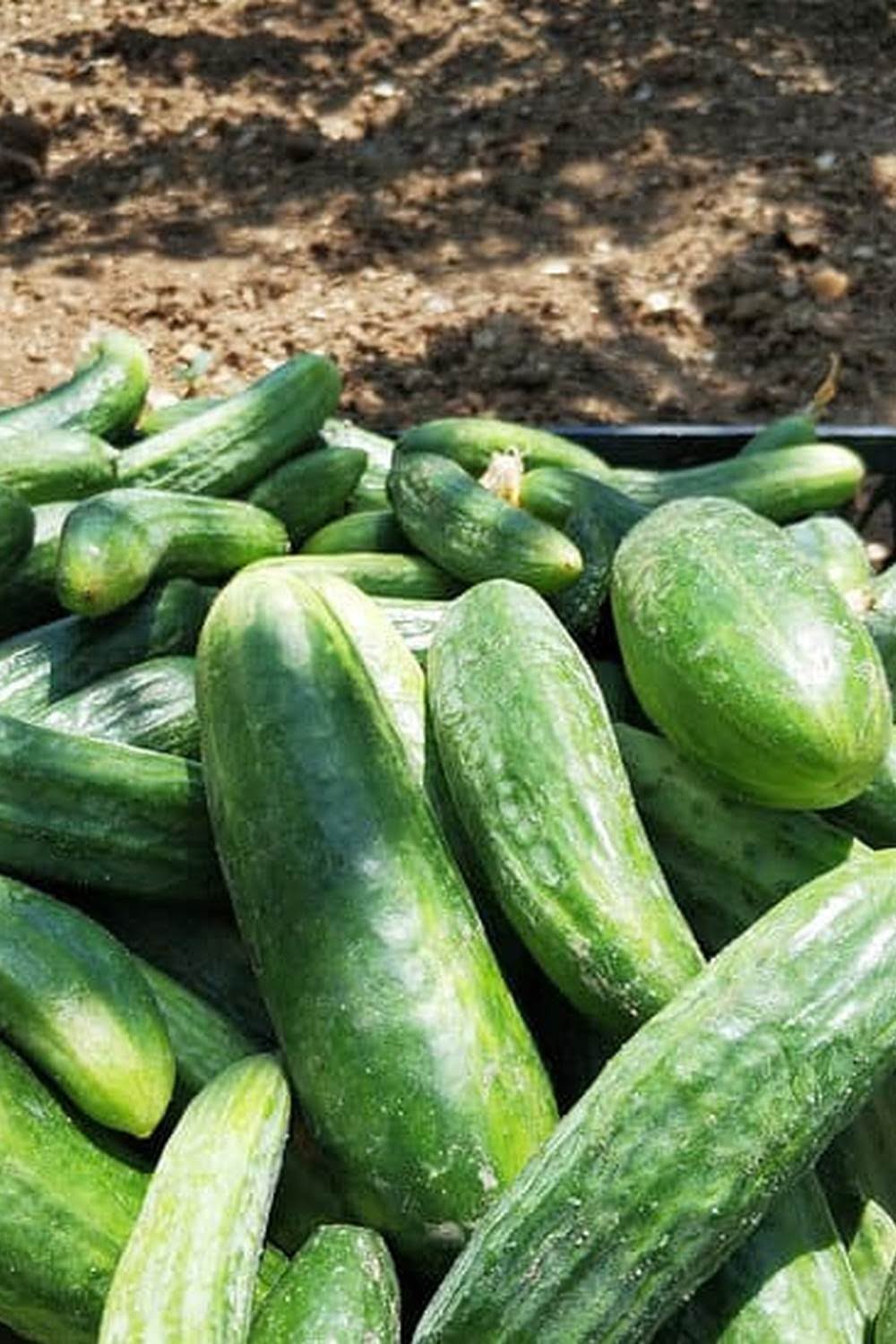Introduction
Vegetable garden walls are an increasingly popular gardening alternative for urban and suburban residents. There are a variety of ways you can design and build a vegetable wall in your backyard or even indoors. With this solution, you don’t have to sacrifice the beauty of your home’s exterior to enjoy fresh vegetables year-round.
By having a vegetable garden wall, you can create a small food oasis right in the comfort of your own home. You will always have access to fresh produce without having to worry about trips to the store — especially when living in urban or suburban areas. Furthermore, gardens with vertical designs save space while maximizing the potential size and productivity of the area. The use of hanging planters or trellises are great options for reducing the amount of ground taken up and allowing flexibility when planting seeds, seedlings, and mature plants such as tomatoes, beans, cucumbers, sugar snap peas, green onions, radishes, strawberries and more. Vegetable garden walls also attract helpful pollinators like bees which helps improve overall production yield. With careful planning and positioning you can also benefit from additional sunlight exposure needed by certain crops that may not fully thrive otherwise in shade-prone areas. Ultimately no matter what type of structure you choose for your project — vertical garden wall looking like a mini fence with raised beds or other creative DIY designs it offers an aesthetically pleasing outcome compared to traditional gardening methods!
Uses for a Vegetable Garden Wall
One of the most common uses for a vegetable garden wall is to create an outdoor kitchen of sorts. A vegetable garden wall can provide the perfect backdrop to build out an outdoor grilling area, fire pit, or pizza oven. It is a great way to turn any spare corner of your backyard into an outdoor entertainment area.
Another great use for a vegetable garden wall is creating a vertical garden. You can construct different types of planters where you can situate different types of plants and vegetables in various heights. When building the planters, you’ll want to make sure that they are secure enough to handle the weight of all the plants that will be growing inside them. Additionally, this feature allows you to make the most out of precious garden space by taking advantage of vertical space without sacrificing too much area that could otherwise be used for other purposes such as seating or landscaping.
Finally, using a vegetable garden wall as trellis for vines can be another great way to get creative with your garden design. Whether you choose tomatoes, squash, climbing beans, or grapevines, having some type of trellis planted along the walls will add interest while also providing additional structure and support to your plants as they grow and mature over time.
Different Materials for Building a Vegetable Garden Wall
If you want to create a vegetable garden wall or fence to separate your vegetable patch from the rest of the garden, there are several different materials that can be used. Wooden boards and panels can be used as a privacy barrier to prevent animals and small pests from entering the area. Wire mesh is another great option for keeping out larger pests such as deer, rabbits, and rodents. It also provides air circulation that helps promote the growth of healthy vegetables. Bricks are an attractive choice but can be quite expensive; however, it has benefits such as providing insulation in colder climates and better security protection against human intrusion. Trellis systems composed of plastic lattices or wooden trellises can be used to support climbing vegetables like tomatoes and beans, giving them a more aesthetically pleasing appearance in addition to providing extra strength when holding up heavier plants. For those looking for something really unique, cinder blocks combined with pots planted with herbs or flowers will give your veggie patch an interesting architectural element while also providing useful growing space!
Design Tricks to Maximize Space and Efficiency
For vegetable gardeners who want to maximize their space and efficiency, there are various design tricks that can be employed. For example, creating a wall of vertical planters is a great way to get more plants in the same area without sacrificing sunlight. It’s also possible to customize the planting with several levels built into the wall, allowing you to grow more unusual or climbing vegetables at lower levels while lettuces and tomatoes take the sunshine on top. Creating separate sections for different types of vegetables allows for easier harvest management and less waste from accidental cross-pollination. In addition, installing trellises along the wall can give climbers suitable structure to climb up onto as well as extra height for space savings. Utilizing which materials for these walls should also take into account specific climate factors and protection from wind, both of which can be provided by wooden retaining walls or sturdy metal cages, whichever looks best with your garden’s aesthetic too.
Pre-Planning Your Garden Wall Build
Before you start building your vegetable garden wall, take some time to plan out your build correctly. Start by sketching a rough outline of the wall on paper and deciding what type of wall you want to create: raised-bed walls, free-standing retaining walls, or terraced walls. Measure the space you plan to build in so that you can pick the right materials for your project. Consider gathering information about local building codes and regulations before starting too so that you remain in compliance with any applicable laws during your construction. Once your planning is done, it’s time to shop for supplies like rocks, soil and tools before getting started with the actual build.
DIY Vegetable Garden Wall Projects
Vegetable garden wall ideas can include many types of DIY projects. One project is to build raised garden beds, accessible from both sides. You will need to install frames for the sides and back of your garden bed, using pressure-treated wood to ensure longevity. Fill in the frame with soil and you have a two-sided, raised vegetable garden wall. Another idea is to mount hanging planters or shelves to your outdoor wall, complete with drainage holes so your plants don’t get overwatered. These can be kept indoor or outdoor – giving you plenty of space for small edible plants like herbs and salad greens that need more light than ground-level planting. Vertical gardening is a popular trend among home gardeners too; create a living wall mural with various plants succulents that can be hung on the side of an outbuilding or garage. If these options aren’t right for you, consider creating an urban balcony garden with vertical trellises, hanging baskets and metal cages filled with hardy vegetables like tomatoes, peppers and cucumbers that thrive in vertical circumstances. Urban dwellers can enjoy having access to fresh veggies even throughout cold weather months if they invest in cold frames or hoop houses that fit over containers on a rooftop patio or deck. There are also wooden cold frames that come preassembled or kits ready for assembly at home center stores as well as numerous greenhouse suppliers online.
Pros and Cons of Hiring a Professional
Pros:
1. Professional design and installation services will ensure that your vegetable wall is built correctly and looks good.
2. Professionals are familiar with building codes and safety regulations, so you won’t have to worry about getting fined or having to make corrections later.
3. They can provide guidance on what type of materials work best for your specific wall, as well as advice on how to maintain it long-term.
4. Hiring a professional can help save time and energy, since they’ll be able to do the bulk of the work quickly.
Cons:
1. Professional garden wall construction can be expensive, depending on how large and complicated your project is.
2. It might take longer than expected for the job to be completed due to scheduling issues or material delays.
3. If you’re not sure exactly what you want out of your vegetable garden wall, it could be difficult communicating these ideas effectively with the professional team building it.
How to Care for Your Vegetable Garden Wall
Caring for a vegetable garden wall requires regular maintenance to ensure best results. Once the wall is constructed, it should be checked regularly for cracks and other imperfections that may affect its stability; these should be fixed immediately or the structure could collapse. Once secure, regular watering will keep plants healthy; three to five inches per week is generally recommended. Fertilizing is also an important part of caring for a vegetable garden wall, as it provides necessary nutrients for plants to thrive. Apply fertilizer every four to six weeks with a balanced blend of nitrogen and phosphorus–this can help boost growth significantly. Lastly, don’t forget to prune and trim your vegetable garden walls as needed; this helps maintain shape and size while promoting proper air circulation which aids in preventing disease and pests. Making sure your garden wall stays healthy, strong, and attractive can benefit both your vegetables and curb appeal!
Conclusion
Building a vegetable garden wall is an inexpensive and fun way to create a functional outdoor space that can bring many benefits. It can provide fresh, organic food right outside your own home. It also adds visual interest to your garden and creates additional habitat for beneficial wildlife, such as butterflies and birds. Additionally, a vegetable garden wall equipped with trellises or other structures will give you the ability to grow vining plants which take up far less room than their non-vining counterparts. Finally, the structure of a wall in the garden allows you to customize it so that it fits best in your yard and fits with the existing landscaping. Whether large or small, adding a wall to your vegetable garden can make all the difference when it comes to increasing your families’ access to healthy foods and creating a lush and enjoyable outdoor living space.

If you’re looking to get into vegetable gardening, or are just looking for some tips on how to make your current garden better, then you’ve come to the right place! My name is Ethel and I have been gardening for years. In this blog, I’m going to share with you some of my best tips on how to create a successful vegetable garden.





